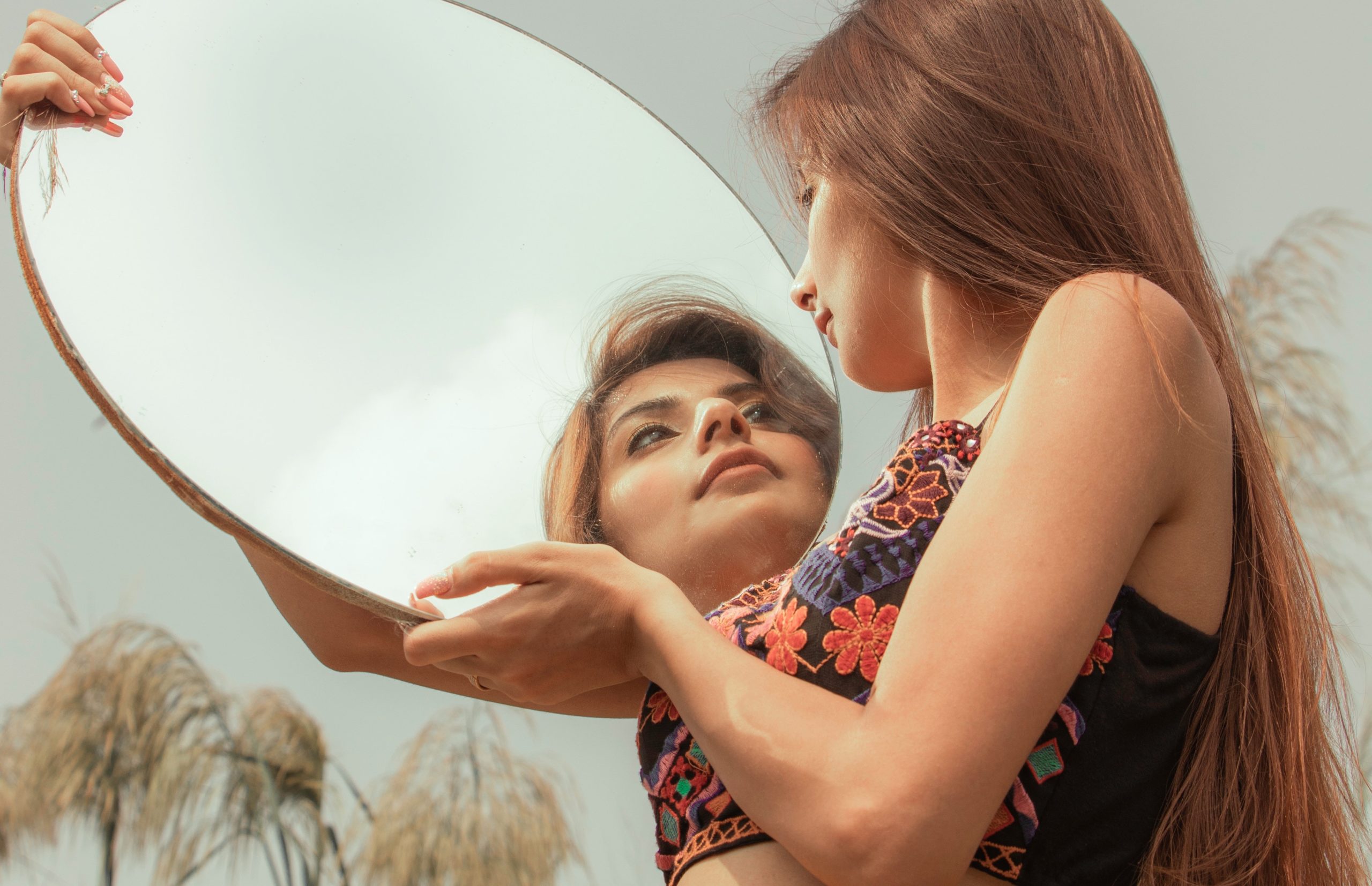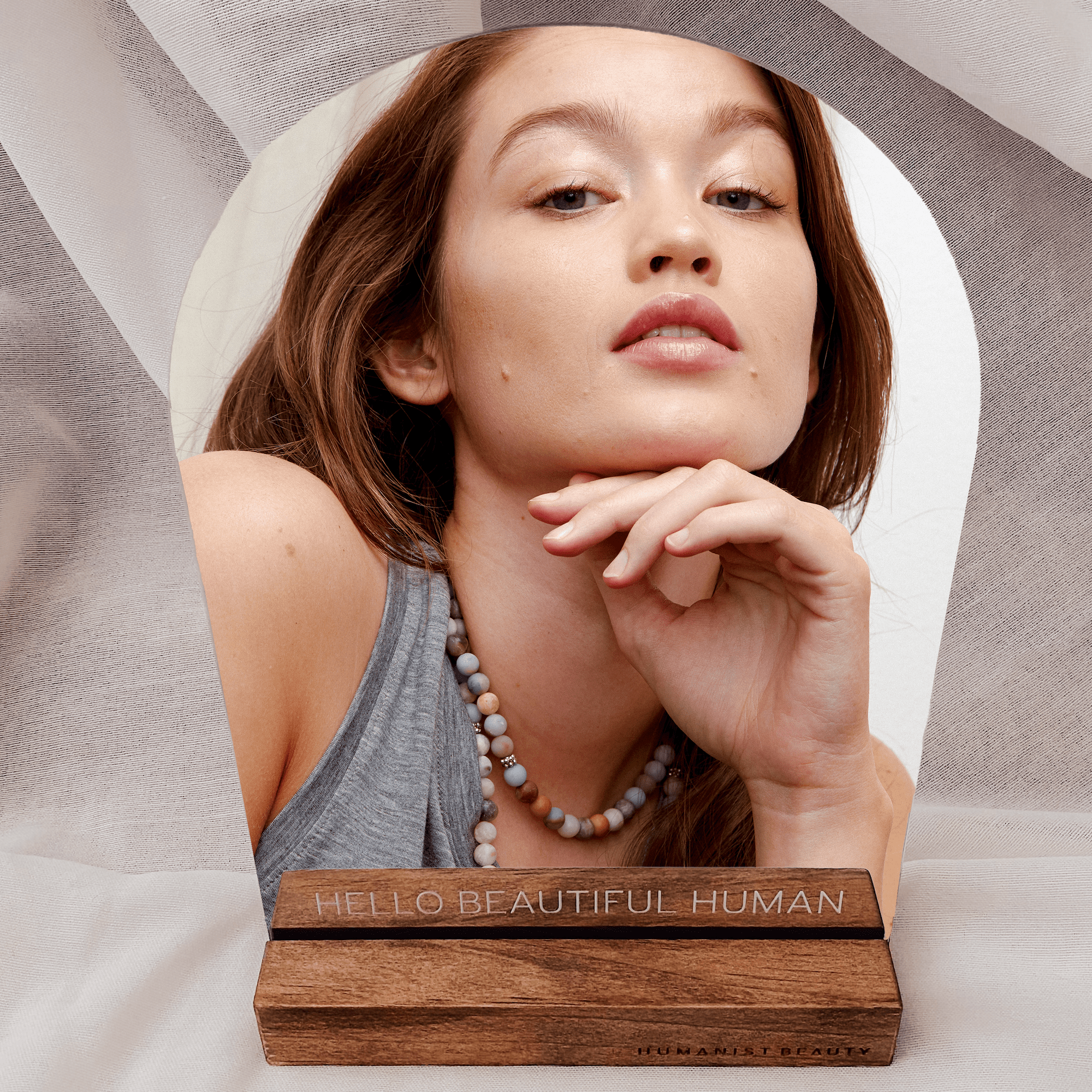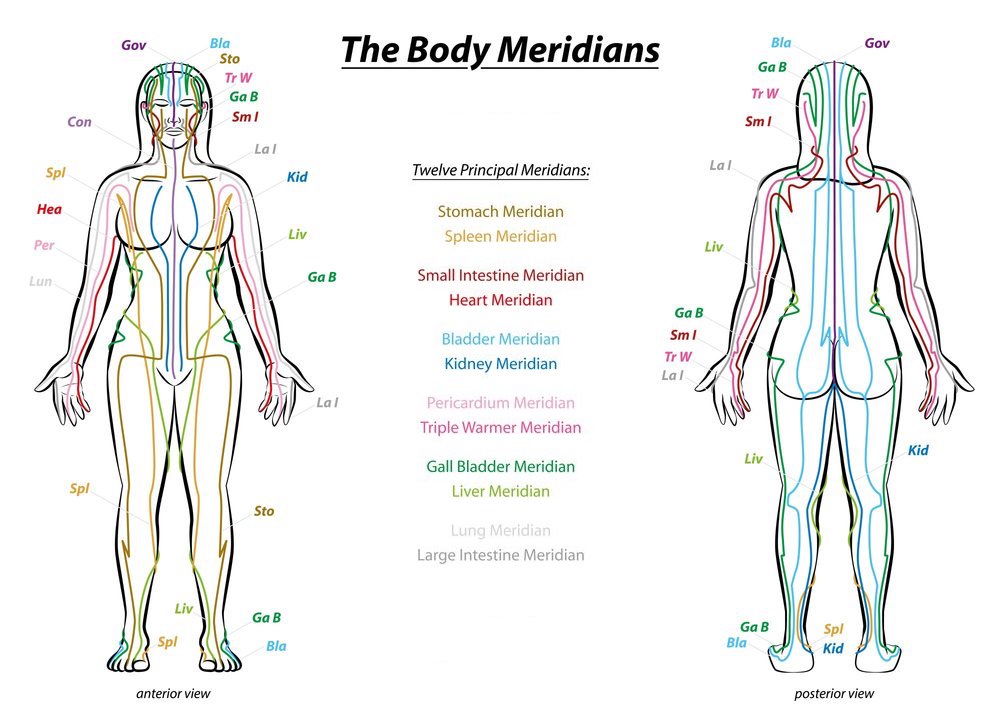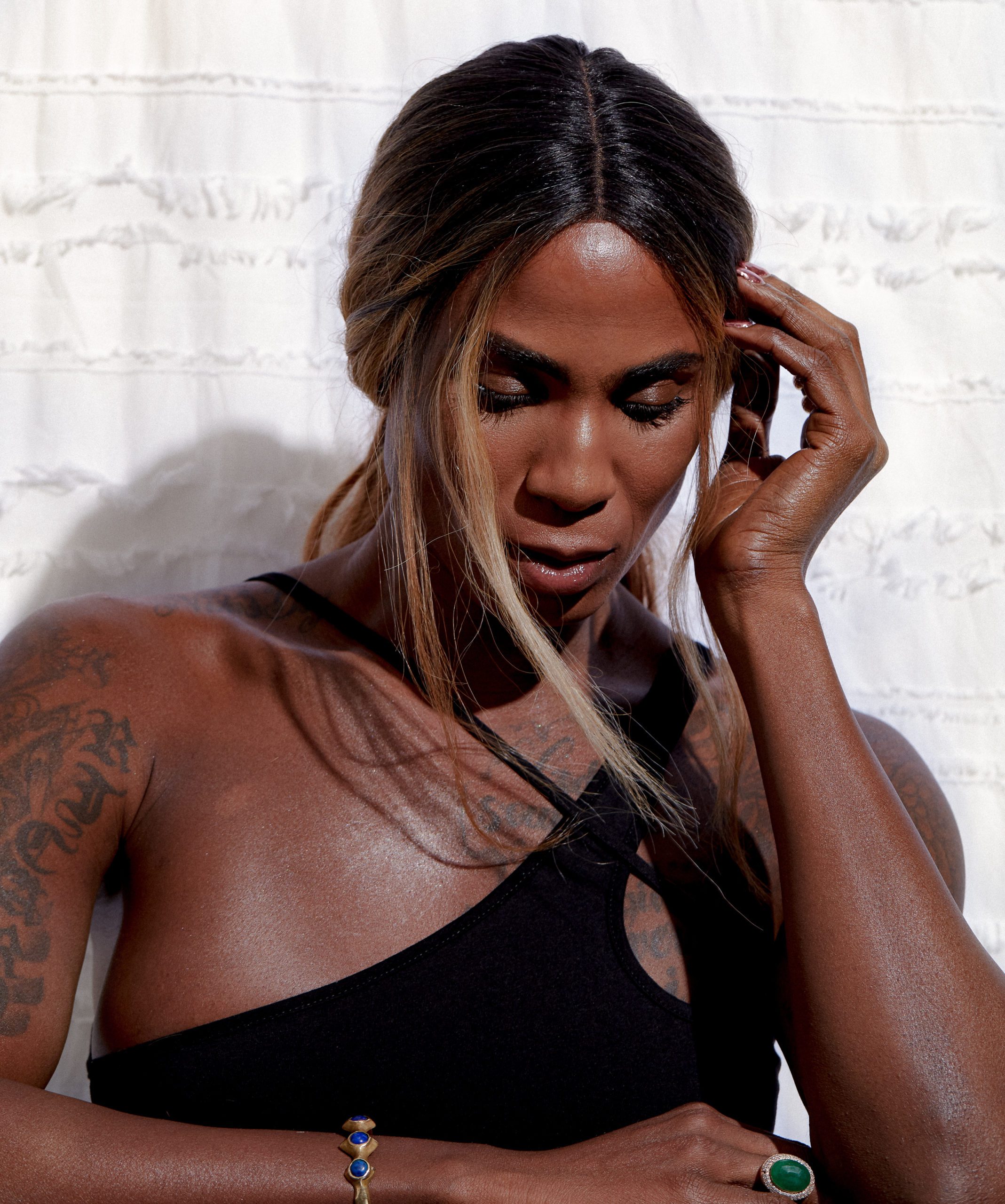That’s the Spirit
When I was younger, I was raised as an unusual hybrid Roman Catholic / Born Again Protestant Christian, and I believed that other non-Christian religions and philosophies such as Hinduism and Buddhism were evil. Since they did not honor Jesus Christ and instead extolled other beings as divine (Brahma, Krishna, Buddha, etc.), I feared and shunned even learning about these beliefs until the desire for expanded knowledge got the best of me in my later years. I’ve now come to believe that the fear of the different and the unknown is the biggest reason why people on this earth don’t get along. Different people are strange. Different cultures are bizarre. Different beliefs are wrong. What if we removed that fear and instead sought to understand what we presently do not understand? We could possibly learn something profound that when applied to our own lives may help provide a new, fresh perspective. And so I started practicing yoga and learning about the benefits of meditation beyond the prayers I recited as part of my Catholic religious affiliation. I started to learn about universal energetic forces and appreciate the relationship between men, women, and all of nature. I started to embrace my inborn proclivity towards Eastern philosophy as plausible and beneficial. I began dismantling the need to align with a single religion and instead became a student of spirituality. As such, I now appreciate elements within various beliefs and practices that help illuminate aspects of the human condition that I had not known about before. For those of you reading that may be turned off by all this, surely, I understand. I was once right there with you. But consider that you are reading this article for a reason. If you are searching for answers that you have not yet found, you may just find some value in being open to new ideas to explain your situation and potential new methods, even spiritual ones, to help.
Diving into energy healing may seem all too woo-woo to you at first glance, like pseudo-science to the empirical skeptics. But let me tell you why there are some important nuggets here to consider. First, we are all made up of energy. We are all impacted by energy. Our hearts beat because our bodies are nourished, our brains produce wave patterns as we think, dream, and create, and our emotions are impacted by the energetic stimulus of what we see, feel and comprehend. Light, sound, matter…everything that exists holds energy, so therefore everything in our environment potentially impacts our well-being. We interpret colors from the wavelength or frequency of the light we see. We interpret sounds from the wavelength or frequency of the sound we hear. We create emotions from the wavelength or frequency of the stimulus we feel. So when you consider the energy around you and the energy that you have inside you, you can perhaps take a new approach to control those energies to better manage your well-being.
Healing Power Lies Within
Since each person resonates within a range of frequencies, it’s helpful to know what that frequency is and where it vacillates to. The most well-accepted way of universally decoding human vibrational energy is through the chakra system. The chakra system originated in India between 1500 and 500 BC in the oldest text called the Vedas. The word in Sanskrit means “spinning wheel.” There are theoretically seven chakras that run along the human spine, which conceptualizes the connection between your spiritual and physical self. Each chakra spins at a specific rate and so aligns with a visual and audio frequency, i.e., a color and a pitch. From bottom to top, the chakras align with the seven colors of the rainbow (from red to violet) and with the seven main music notes (from C to B). Due to physical, emotional, or spiritual stress, chakras are said to speed up, slow down, become blocked or unbalanced. There can be long periods when the chakras can be thrown out of whack due to internal or external energetic insult. The key to chakra therapy is early recognition and remediation to help open the chakras back up and bring them back into balance and alignment.
The Seven Chakras
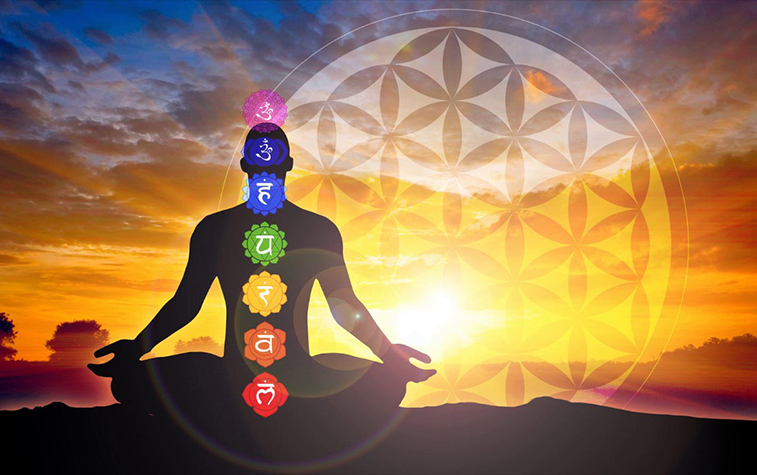
Much of the world swears by the chakra system and views it as an intuitive method for diagnosing what’s ailing you. I must say that personally, I find the system very useful. You can see for yourself. Let’s unpack the chakras, their corresponding frequencies, and meanings to see if they might help you assess where you might uncover some specific emotional imbalances. If anything, you might learn something new and be surprised at how interesting it all is.
Root Chakra

The root chakra is called Muladhara, or the base chakra. It is located at the bottom of the tailbone, spinning at the base of the spine. Just as with Maslow’s Hierarchy of Needs, it represents the foundational essence of human survival and safety. It is denoted by the color red and the note C. The root chakra designates our desire to be alive and our relationship with our tribe. It is our sense of belonging. Our primal feelings of fitting in, being care for, and protected are associated with the color red. Like the color of flowing blood, it symbolizes family, turf, and possession. What happens when the root chakra is blocked or spinning too slowly? It could mean there’s a lack of survival necessities, causing us to feel fearful, anxious, lonely, or insecure. It may seem like the world is out to get us, like no one cares, or like we’re walking on thin ice. We may feel scared, nervous, worried, or sad much of the time. Alternatively, what happens if the root chakra is spinning too fast or out of control? It could stimulate greed and materialism, aggressiveness and anger, suspicion and cynicism. If you have self-awareness of certain traits within your personality that appear consistent with either a blocked or an over-active root chakra, here are some simple suggestions that chakra healers offer to perform with intention:
- Expose yourself to red light or the color red.
- Listen to the C note.
- Chant “I DO” or the sound “Lam”.
- Feel the earth. Go for a barefoot walk outside in nature. Massage your feet.
- Spend some quality time with a close friend.
- Eat organic root vegetables like carrots, potatoes, parsnips, radishes, onions, and garlic. Enjoy red fruits like strawberries, cherries, apples, pomegranate, tomatoes, and raspberries. Dine on protein-rich food like eggs, meats, beans, tofu, soy products, peanut butter. Sprinkle on spices like chives, paprika, and pepper.
- Try grounding yoga poses like mountain pose, warrior 1, and warrior 2.
- Embellish with red/black crystals and stones like Brown Jasper, Red Jasper, Smoky Quartz, Hematite, Cuprite, Mahogany Obsidian, Tourmaline, Rhodonite, Garnet, and Bloodstone.
- Diffuse or wear essential oils such as nutmeg to activate a sluggish root chakra and patchouli or vetiver to calm an over-active one. Maintain a smoothly functioning root chakra with bergamot.
Sacral Chakra

The sacral chakra, or Swadhisthana, sits above the root chakra, about 2 finger-widths below your navel. This chakra is associated with your womb space, and as such, it is considered the source of divine feminine energy. It is the center of your sensual and creative energy, denoted by the color orange and the note D. It is responsible for your passion, your pleasure, your libido, and your desire to produce (or birth) new ideas into the world. It’s one of the reasons why we call projects, products, or things we create our “babies.” The sacral chakra is associated with a one-on-one relationship, whereas the root chakra discussed above is associated with a group relationship. If the sacral chakra is weak or blocked, you may feel low libido, a lack of passion, stifled creativity, or uncomfortable being with just one other person. If the sacral chakra is over-active, you may feel overly emotional, fixated on sex, sexually aggressive, hedonistic, or manipulative. Take a moment to assess your sacral chakra’s position. Are you energetically lacking or over-zealous in creative or sexual energy? If so, chakra healers offer the following simple suggestions to perform with intention:
- Expose yourself to orange light or the color orange.
- Listen to the D note.
- Chant “I FEEL” or the sound “Vam”.
- Enjoy making something. Try coloring, drawing, cooking, baking, or gardening.
- Be around water. Go for a swim, walk by a lake or river. Take a bath.
- Eat organic carotenoid-rich foods like sweet potato, carrots, melons, mangos, pumpkin, orange citrus fruits, peaches, apricots, and butternut squash. Add in nuts and seeds like flax, almonds, walnuts, and sesame. Get plenty of Omega-3s from foods like salmon. Stock up on coconut and spices such as cinnamon. Drink plenty of water.
- Try simple hip-opening yoga poses like side angle pose, bound side angle pose, and garland pose.
- Have fun with crystals and stones like amber, coral and orange calcite, citrine, orange aventurine, carnelian, and hematite.
- Diffuse essential oils such as spicy cardamom to awaken a dormant sacral chakra, and ylang-ylang or neroli calm an over-active one. Try sweet orange or sandalwood to maintain a well-balanced sacral chakra.
Solar Plexus Chakra

I’m going to spend a bit more time on this chakra because it is one that I believe my readers will find quite compelling. The solar plexus chakra, or Manipura, is located at the back of the abdomen. It is the control center of your personal power. As the sacral chakra is a reservoir for feminine energy, the solar plexus is a repository for masculine energy. That may be why so many women struggle with this chakra. The solar plexus chakra reflects your relationship with yourself and is associated with the color yellow. Some say that the solar plexus is the place where your ego resides. When balanced, you feel a sense of confidence, assertiveness, empowerment, personal responsibility, and positive self-image. When weak, you feel timid, incapable, ashamed, or low self-esteem. When over-active, you feel power-hungry, domineering, judgmental, blame-oriented, catty, or perfection-driven.
Some women vacillate wildly in their solar plexus chakras, aka, power swings. They can feel intimidated on an inhale and judgey on an exhale. In the long run, it’s exhausting to rollercoaster between feeling sensitive and insecure one moment then feeling vicious and condescending the next.
Many women find themselves trapped with weak solar plexus energy. In some cases, it is culturally driven, due to alpha male societal norms that view women as the subordinate sex. In these cultures, it is considered appropriate for women to cower in their minds and in their bodies. In other, more liberal cultures where women have successfully fought their way to gender equality, it is common for women to overshoot their power centers to project a domineering, critical, power bitch energy. All too often, women with under-active solar plexus chakras feel a deep sense of worthlessness. I’m ugly. I’m fat. I’m stupid. I’m not good enough. I can’t do anything right. I’ll never find someone who will love me for me. The crushing social pressure of falling short of the alpha female ideal leaves so many women feeling this way.
Let me ask you, what is your relationship with yourself? Do you talk down to yourself? Are you your own worst enemy? Do you live for the applause? Do you use other people to get your way? Are you courageous? Do you follow your gut instincts?
If you feel in the least bit insecure about yourself, I am here to tell you that you can take control of your power. Think of the solar plexus as the place where you can place blame for any doubts you currently feel about yourself. You can say to yourself, “Hey, it’s not me, it’s my solar plexus chakra, and that chakra can be fixed!” You are worthy and amazing. You are a sovereign, almighty being that has nothing to prove to anyone else. The thing that you need to do is just believe that your solar plexus chakra is just blocked and out of alignment. Understand that no words or actions of any other human, including friends and family members, have any bearing on your own self-worth. Have compassion for yourself and know that you can be healed.
If you find yourself with an overactive solar plexus chakra, you are likely a fortune, fame, and power seeker. You may, intentionally or unintentionally, be alienating or hurting other people, then wondering why you feel so empty inside. Narcissism, disrespect, condescension, bullying, manipulation, and cheating start with the individual, but then these traits expand into collective ego manifestations of classism, racism, sexism, ageism, and so on. These “isms” are transparent indicators of societal hubris that have nothing to do with ability and everything to do with the imbalance of power and injustice. It is as if society is overcompensating for its own underlying insecurities regarding power and worth. Today, awareness of cultural power imbalances and injustices is quickly spreading. At least that is a good first step to help bring true equality to bear. But as with any movement, it starts with the individual. If you can be truthful with yourself about an unrelenting desire for power or to prove yourself, you can recognize the detrimental fallout it can bring. A real heroine recognizes her power without having to wield it to gain approval from anyone else but herself. If you would like to work on balancing your solar plexus chakra, healers offer the following simple suggestions to perform with intention.
- Expose yourself to golden yellow light or the color golden yellow.
- Listen to the E note.
- Chant “I CAN” or the sound “Ram.”
- Do something spontaneous. Put on some music you love and dance around your living room.
- Spend time outdoors in the bright sunlight. Take a walk around the block. Treat yourself to yellow flowers like yellow roses, sunflowers, or daisies.
- Eat organic yellow organic foods like bananas, cheese, pineapple, corn, lemons, squash, golden apples, honey, and yellow curry. Enjoy fibrous foods like coconut, oats, brown rice, spelt, rye, farro, beans, vegetables, and sprouted grains. Add spices like ginger, chamomile, vanilla, mint, and cumin. Drink dandelion, ginger, or chamomile tea.
- Try the yoga boat pose and the sun salutations.
- Experiment with crystals and stones like amber, yellow tourmaline, citrine, sunstone, yellow topaz, golden calcite, yellow jade, golden tiger eye, and yellow jasper.
- Explore essential oils like eucalyptus and juniper berry to stimulate a weaker solar plexus, and vetiver or helichrysum to calm an over-active one. Try grapefruit or lemon for an already well-expressed solar plexus chakra.
Heart Chakra
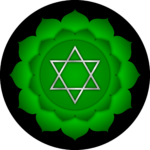
The heart chakra, or Anahata, is located at the center of your chest. It is considered the juncture of physical and spiritual well-being, adjoining the three chakras below with the three chakras above. Represented predominantly by the color green and the note of F, the heart chakra is the center of your emotion and trust. When balanced, you feel unconditional peace, love, compassion, beauty, tolerance, and openness. You are quick to forgive yourself and others. When weak, you feel bitter, hateful, scornful, distrusting, and intolerant. When over-active, you feel jealous (green with envy), overly dependent, self-sacrificing, heart-broken, and gullible. Divorce, betrayal, trust issues. If you’ve been deeply hurt by someone you love, your heart chakra may be blocked or even closed. A key indicator of a closed heart chakra is asking yourself if there is someone in your life that you cannot forgive. If that is the case, then the pain you feel will continue to eat away at you until you decide to let it go. Easier said than done, right? Absolutely. If you’re aware of your pain and that certain triggers can cause that pain to bubble up over and over again, now is the time to get rid of it once and for all. Holding onto that pain hurts yourself as well as the people that are closest to you. You won’t be able to give your kids or your spouse all of your best if you’re still suffering from the pains of the past. Commit right now to heal. You deserve to be freed of the burdens of yesterday.
Healers suggest addressing heart chakra imbalances by starting with the following simple methods performed with intention:
- Expose yourself to green light or the color green.
- Listen to the F note.
- Chant “I LOVE” or the sound “Yam” (pronounced “Yum”).
- Visualize a bright green orb in front of your chest, filling your heart with kindness and forgiveness. Open and lift your hands in front of you. Picture all the hurt and hate and anger and disgust you feel like a knotted black ball placed into the palms of your hands. Breathe in and out three times. On the third, exhale blow all that black hurtful dust away until it completely dissipates into the void and is gone. Breathe in pure, fresh breaths, and smile.
- Eat organic green foods like broccoli, chard, zucchini, avocado, lime, peas, kiwi, spirulina, and green apples. Make a raw leafy green salad with kale, spinach, celery, and cucumber. Drink fresh green juice, a smoothie, or green tea. Add green herbs like basil, thyme, mint, parsley, and cilantro.
- Try heart-opening yoga poses like upward-facing dog, camel, and bridge.
- Meditate with crystals and stones like emerald, green jade, green aventurine, green jasper, rose quartz, rhodochrosite, rhodonite, amazonite, and malachite.
- Explore essential oils like palmarosa to open the heart chakra, and lavender or sweet marjoram to quiet it down. Try geranium to maintain a well-functioning heart chakra.
Throat Chakra

The throat chakra, or Vissudha, is the hub of your voice and communication. It resides at the center of your throat, is associated with the color blue and the note G. A balanced throat chakra enables you to express yourself clearly, confidently, and diplomatically. When blocked, you may have a hard time speaking out, be misunderstood, be secretive, or a poor listener. When over-active, you may be loud, opinionated, gossipy, talk over others, or use harsh language. If you don’t have the physical ability to speak, or words cannot adequately express your emotions, that does not necessarily mean that your throat chakra is closed. You may have other successful methods of communicating, such as sign language, writing, art, dance, music, or design. The key here is in your desire for expression and the clarity of communicating your thoughts and feelings to others, regardless of form. How would you objectively rate your ability to clearly communicate your ideas and feelings? Does it depend on who you’re communicating with? Are you more comfortable and free-flowing when you’re communicating one-on-one? In a small group? To a large audience? In front of a camera? Over text? On social media? To a therapist? Or does it not matter? When you communicate, what is the common tone of your communication? Is it shy? Awkward? Sarcastic? Caring? Humorous? Whiney? Critical? Horn-tooting?
To heal an imbalanced throat chakra, healers suggest starting with these simple tips performed with intention:
- Expose yourself to blue light or the color blue. There is much debate today about the safety of blue light exposure, particularly from electronic devices, and so I will not give the recommendation to stare at blue light. I will say at the time of this writing that there is no known evidence of harm to your retinas or to your circadian rhythms by wearing the color blue or painting rooms in your house blue.
- Listen to the G note.
- Chant “I EXPRESS” or the sound “Ham” (pronounced “Hum”).
- Keep a journal and free-write without censoring your thoughts. Have an open conversation with a family member. Try singing or humming.
- Eat organic blue foods like blueberries and blackberries. Drink liquids such as coconut water, herbal teas, raw honey, and lemon. Savor fruit that grows on trees such as apples, pears, and plums.
- Try throat-opening yoga poses like camel, plow, cat-cow with lion’s breath, shoulder stand, and fish.
- Explore crystals and stones like aquamarine, angelite, lapis lazuli, blue lace agate, blue kyanite, turquoise, and azurite.
- Bask in essential oils like lemon to open a sluggish throat chakra, and vanilla or Roman chamomile to calm an over-active one. Maintain the even expression of the throat chakra with coriander seed.
Third Eye Chakra
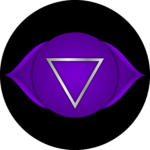
The third eye chakra, called the Ajna, is the epicenter of your intuition and your mind’s potential. It is located at the center of your browbone and is associated with the color indigo and the note A. Some say that the third eye is your 6th sense, extending beyond mere physical knowledge into the realm of spiritual awareness. Others say it is activated by the pineal gland. When you become tuned in to your life’s purpose, make decisions using both logic and instinct, recognize the big picture, and trust your intuition, you have a well-balanced third eye chakra. If you lack vision, imagination, or focus, act with poor judgment, or cannot see beyond the physical, chances are your third eye is blocked. If you suffer from nightmares, delusions, hallucinations, or are out of touch with the physical realm, chances are your third eye is over-active. In recent years, I have come into contact with individuals possessing powerful gifts of unquestionable intuition. Blessed with the ability to “see that which cannot be seen,” they are attuned to natural vibrational energy and inter-dimensional messages. With pureness of integrity, they offer gifts such as channeling, way showing, and light-bearing to help others overcome their current struggles. One of the things I hear from each of them when frustrated with my own lack of ability to “see what they see” or “sense what they sense” is that everyone has the potential to open their third eye fully. It does take time and practice, often through meditation and openness, to achieve the everyday ability to tap into intuition so effortlessly. And so, I write very humbly now, sharing my own personal desire to enhance my intuitive strength, in hopes that you may also be open to tapping in further to your own insightful abilities. With greater awareness for what is and what can be, we may each have the wisdom to make the right life choices for the betterment of humankind. To help open the third eye chakra, healers share the following simple suggestions performed with intention:
- Expose yourself to indigo light or the color indigo.
- Listen to the A note.
- Chant “I SEE” or the sound “Aum”.
- Detoxify your pineal gland by eliminating chemicals like fluoride, alcohol, pesticides.
- Connect with natural light by lying down and just relaxing under a wide-open blue sky.
- Take time to be in complete silence. Pay attention to intuitive signals. Listen to your inner voice.
- Eat organic purple foods like purple grapes, purple kale, blueberries, purple cabbage, eggplant, and purple carrots. Try herbs like celastrus seed, holy basil, and blue lotus tea. Sprinkle on poppy seeds.
- Try yoga poses like lotus, warrior 3, child’s pose, shoulder stands, and forward bends.
- Meditate with crystals and stones like iolite, lapis lazuli, amethyst, fluorite, sodalite, pietersite, tanzanite, azurite, and phenacite.
- Dab on essential oils like rosemary to open a sleeping third eye chakra, and German chamomile to stabilize an over-active chakra. Use frankincense or sandalwood to maintain a clear and balanced third eye chakra.
Crown Chakra
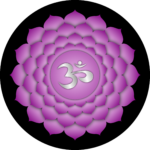
The crown chakra, or Sahasrara, sits at the very top of your head and is the conduit of connectivity to God, Yahweh, Allah, Christ, Krishna, Brahma, Holy Spirit, Source, Higher Self…whatever name you associate with the Divine. It correlates to the color violet, the note of B, and the Self Actualization pinnacle of Maslow’s Hierarchy of Needs. When your crown chakra is open and flourishing, you awaken to strong faith, universal love, awareness, wisdom, understanding, and gratitude. You see the beauty and abundance in life, and your days are filled with joy. This chakra is transcendence – it provides assurance that God is on your side, allowing you to rise above life’s challenges more gracefully, with less mental anguish. If your crown chakra is blocked, you may suffer from depression, feel overwhelmed, be angry with God, or sense that the world is evil. If your crown chakra is over-active, you may be overly dogmatic, judgmental, spiritually addicted, or believe you are immune to all human ailments. As with the other chakras, it is possible to swing from one extreme to the other. One day you may adamantly believe that you are impervious to disease, the next day you may be cursing God because you’ve been diagnosed with cancer. As humans, we are all susceptible to the human condition – we are imperfect, we injure, we become ill and we succumb to death. With the exceptions of Jesus, the Son of God, who was without sin, and Enoch who did not die, I do not know of any other humans that avoided the aforementioned states. If you find that your crown chakra needs tuning, healers offer the following simple suggestions performed with intention:
- Expose yourself to violet light or the color violet.
- Listen to the B note.
- Chant “I AM” or the sound “Ang”.
- Say grace. Practice gratitude. Practice slow, deep breathing.
- Watch the sunset.
- Try fasting.
- Explore yoga poses like lotus, warrior 3, child’s pose, shoulder stands, and forward bends.
- Meditate with crystals and stones like celestite, obsidian, clear quartz, moldavite, amethyst, or blue sapphire.
- Diffuse essential oils like lavandin to clarify a low functioning crown chakra, and neroli or vanilla to calm an over-active one. Try frankincense to maintain a well-functioning crown chakra.
Now that you’re more familiar with the chakra system and have a better understanding of energy alignment, you can be more conscious of your own strengths and opportunities for balance. As you have discovered, your energy is affected by light, sound, smell, environment, nourishment, physical conditioning, and many other factors. Mindfully curating the elements you are immersed in every day can favorably enhance the calmness of your mind, the clarity of your vision, the care of your communication, the love of your heart, the confidence of your gut, the creativity of your loins, and the security of your base. If you can gain better balance in even one of these chakra areas, then you will be making tremendous progress on your path to better wellness.
Waking Up to Higher Consciousness
When you suddenly open up to a higher state of consciousness, you feel a bit like an alien that has been dropped on earth from another planet. Your friends, family, and colleagues may notice a difference. Some may like it. Others may hate it. You may seem to lack the same cares as those who used to lean on you as their misery cushion or complaint companion. You may be gradually or abruptly excluded from certain circles. You may attain a clearer sense of right and wrong, so the wrongs of the world seem that much abhorrent to you. You wonder why people don’t treat each other better. You question why people worry themselves so much over things. There is a period of confusion because you start to understand what it means to be living in this world but not of this world. You feel a greater sense of calm, control, and inner peace.
Having higher consciousness does not mean you walk around with your head in the clouds. And it doesn’t permit you to act like a holier-than-thou self-righteous boob. It just means that you really know yourself, you have a strong relationship with You and with God, and you feel an intense connection to energy. More and more humans are waking up to realize that the earth and the world are two very different things. The earth is the planet. The world is how we comprehend all the experiences created on the planet. Two people standing next to each other on the same planet can be in two very different worlds. So recognizing that every human is living in his or her world may help us to have more compassion. We are a planet made up of billions and broken worlds. Our views are shaped by what we learn in our worlds. When clashes happen, the only way to heal is through compassion and forgiveness grounded in God-given love.

